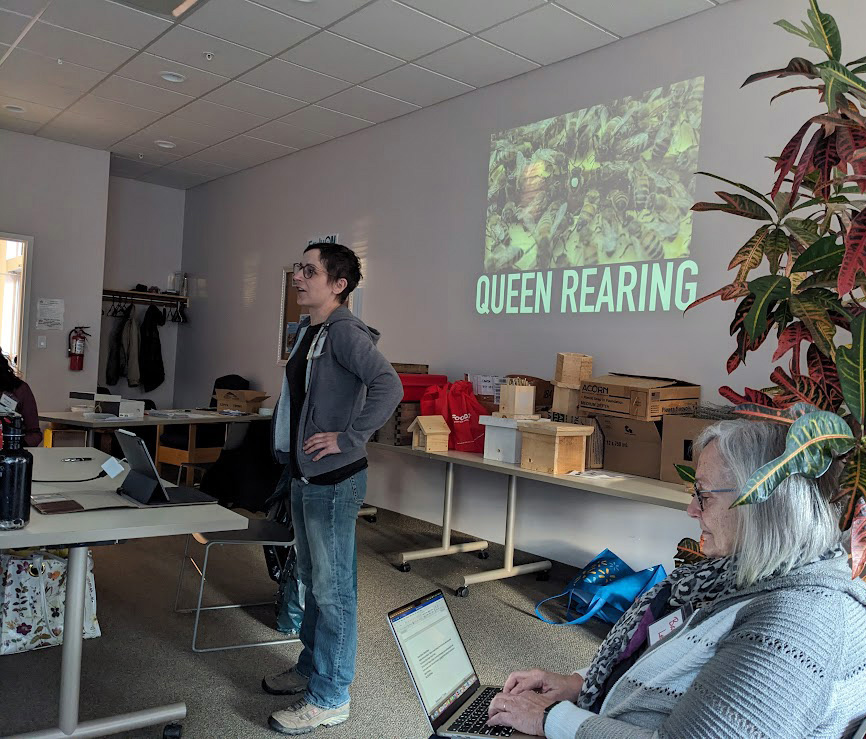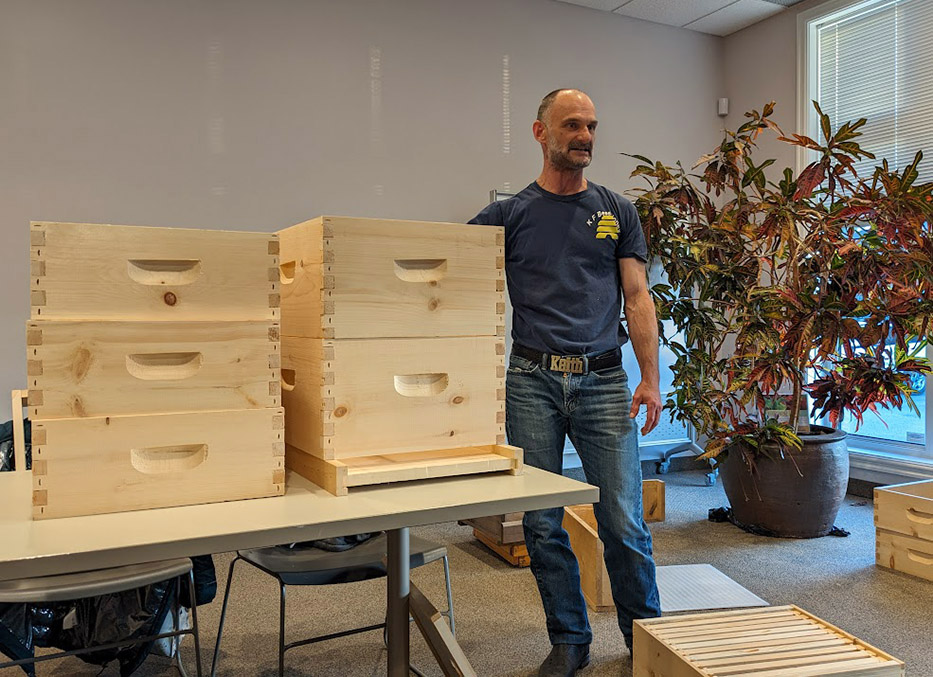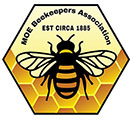

 By MOEBA
By MOEBA- 593
TOPICS: Queen Rearing, Native Bees and Spring Management
Queen Rearing
Thank you Mandy Wilson for a great presentation on queen rearing!
If you are interested in buying Mandy’s queens, her business is called Sticky Fingers Honey N Herb Introductory Queen Rearing Manual (the manual Mandy recommended)
https://www.ontariobee.com/outreach/manuals-books-dvds
Native Bees
Here is some additional information from Rob Blair about native bees:
Common Bees of Eastern Ontario
Bumble Bees: 16 species in Ontario. Common Eastern is the most prolific. Nest in abandoned burrows, under shelter of logs, brush etc. 4 of 16 are classified as endangered, several others have “special status”.
Carpenter Bees: Large Carpenter Bee, a North American native which is moving northward in range with climate change. Nests in tunnels excavated in wood.
Small Carpenter Bee: Nests in hollow stems and dead wood. An excellent candidate to occupy our “tube” nest sites.
Cuckoo Bees/Nomad Bees: Solitary, some species are kleptoparasitic laying eggs in nests of other bees. Common in urban areas.
Mining Bees: As the name implies ground-dwelling.
Plasterer Bee/Cellophane Bee: Ground nesting species with a unique clear cocoon around the egg.
Sweat Bees: 350 different species in Ontario. The majority of species are ground nesting. The Metallic Sweat Bee, identifiable by its shiny green colour, is the “official” bee of Toronto. ( for the bee trivia lovers, lol)
Mason Bees: Nest in hollow tubes. Has a short 6 week flight season and a home range of 100 meters ( hard to believe)
Leaf Cutter Bees: Emerge in June. Build nests in hollow stems or tunnels. Both Mason and Leaf Cutter cocoons can be harvested overwintered and bought or sold.
Sources: wikipedia (has a decent bumble bee identifier chart on the site)
https://wildlifepreservation.ca
https://inaturalist.ca
Thank you Rob and Tony for a great Beekeeper’s Corner presentation!
The native bee house kits to take home were awesome. Thank you for all the time and hard work you put into making them. Everyone, please share your pictures of the finished product.
Spring Management
You can download the Spring Colony Loss Checklist in case you have lost a colony or colonies and are not sure why, this checklist will help you figure out the cause.
Spring management to be thinking about:
Download the Guide to Spring Colony Management in Ontario
Monitoring for mites- Download the Varroa Mite Sampling and Monitoring Info Sheet
Mite treatments- (consider temperature, withdraw times etc depending on the treatment)
https://www.ontario.ca/page/treatment-options-honey-bee-pests-and-diseases-ontario
Are you using Oxytet? Do you have a veterinarian? (remember 4 week withdraw time before honey supers)
Information on accessing antibiotics can be found here:
https://www.ontariobee.com/outreach/ttp/antibiotic-access-resources-for-beekeepers
Information on Oxytet 62.5 can be found here:
https://www.ontario.ca/page/treatment-options-honey-bee-pests-and-diseases-ontario#section-6




